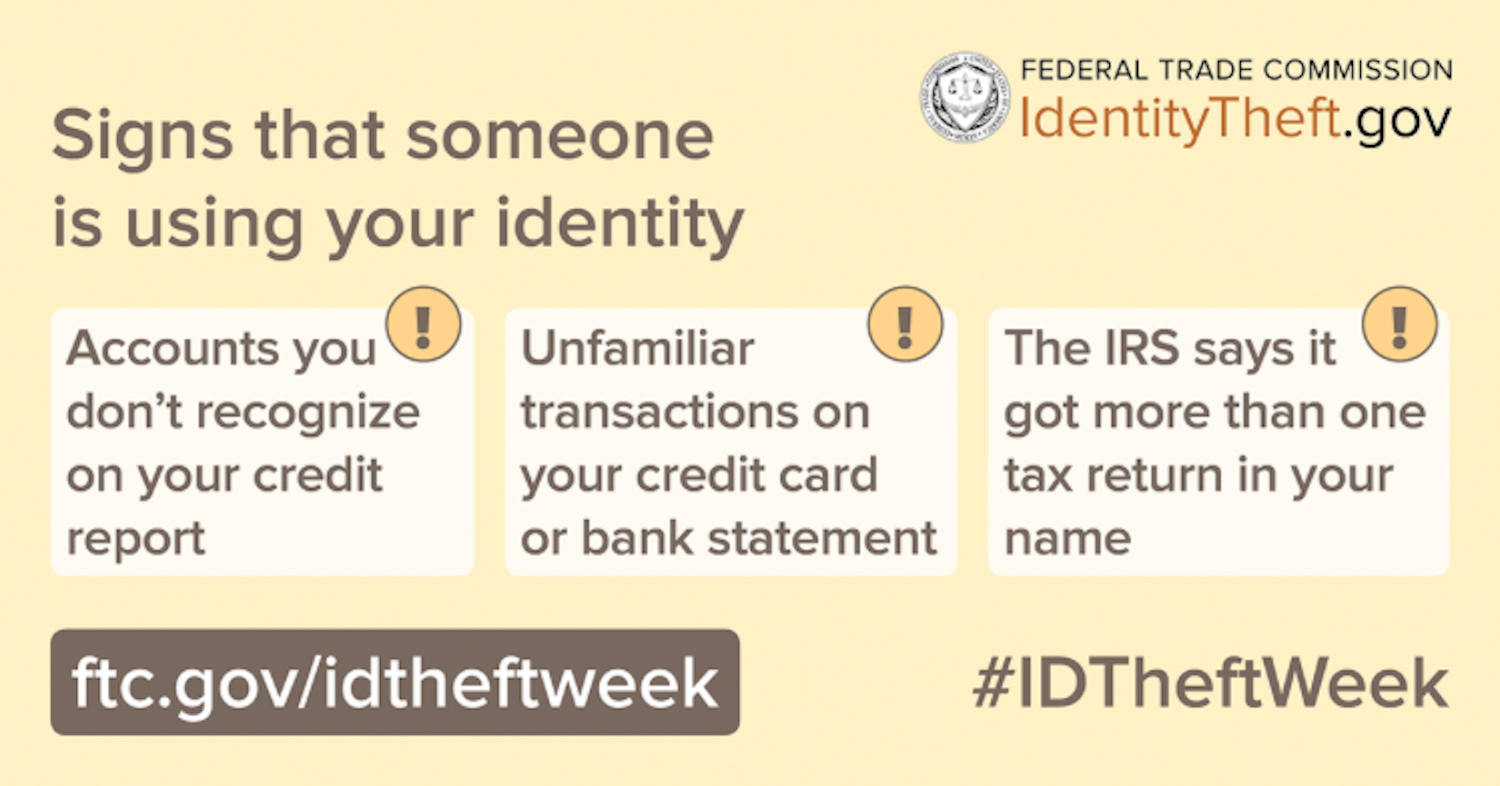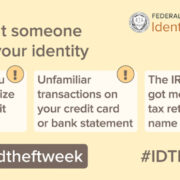
TAKING steps to protect your personal information can help you minimize the risks of identity theft. But what if a thief gets your information anyway? Here are some of the ways thieves might use your stolen information and signs you can look out for from the Federal Trade Commission (FTC):
- An identity thief could use your information to get credit or service in your name.
How to spot it: Get your free credit report at AnnualCreditReport.com. Review it for accounts you didn’t open or inquiries you don’t recognize. A new credit card, a personal loan, or a car loan will appear as a new account. A new cell phone plan or utility service — like water, gas, or electric — will show up as an inquiry.
- An identity thief could use your credit card or take money out of your bank account.
How to spot it: Check your credit card or bank statement when you get it. Look for purchases or withdrawals you didn’t make.
Bonus advice: Sign up to get text or email alerts from your credit card or bank whenever there’s a new transaction. This could help you spot unauthorized or fraudulent activity on your account.
- An identity thief could steal your tax refund or use your Social Security number to work.
How to spot it: A notice from the IRS that there’s more than one tax return filed in your name could be a sign of tax identity theft. So could a notice that you have income from an employer you don’t work for.
- An identity thief could use your health insurance to get medical care.
How to spot it: Review your medical bills and Explanation of Benefits statements for services you didn’t get. They could be a sign of medical identity theft.
- An identity thief could use your information to file a claim for unemployment benefits.
How to spot it: A notice from your state unemployment office or employer about unemployment benefits that you didn’t apply for could be a sign of fraud.
If you discover any signs that someone is misusing your personal information, find out what to do at IdentityTheft.gov. (Alvaro Puig/Consumer Education Specialist, Division of Consumer and Business Education)







